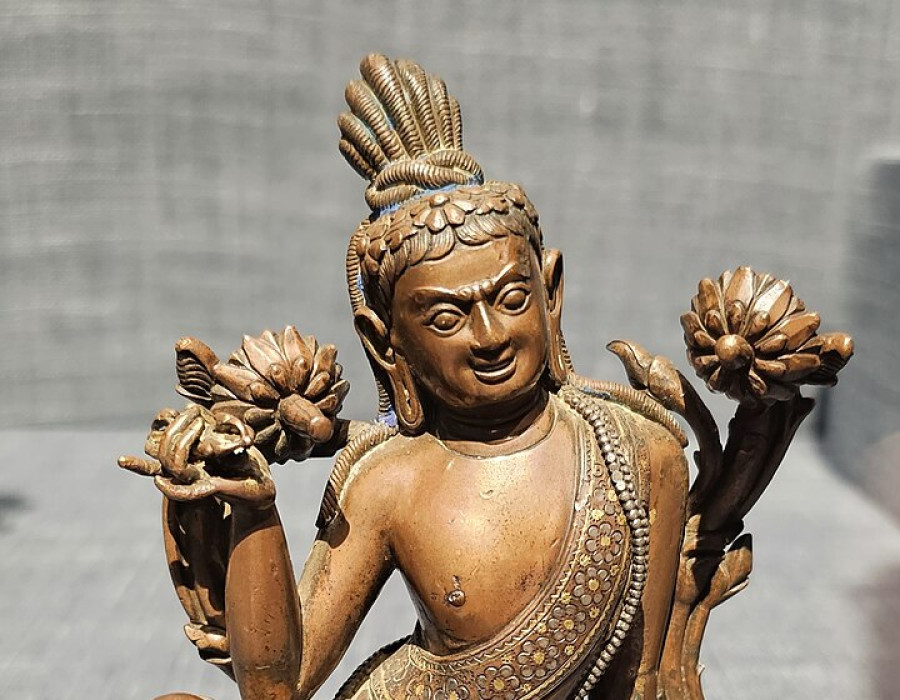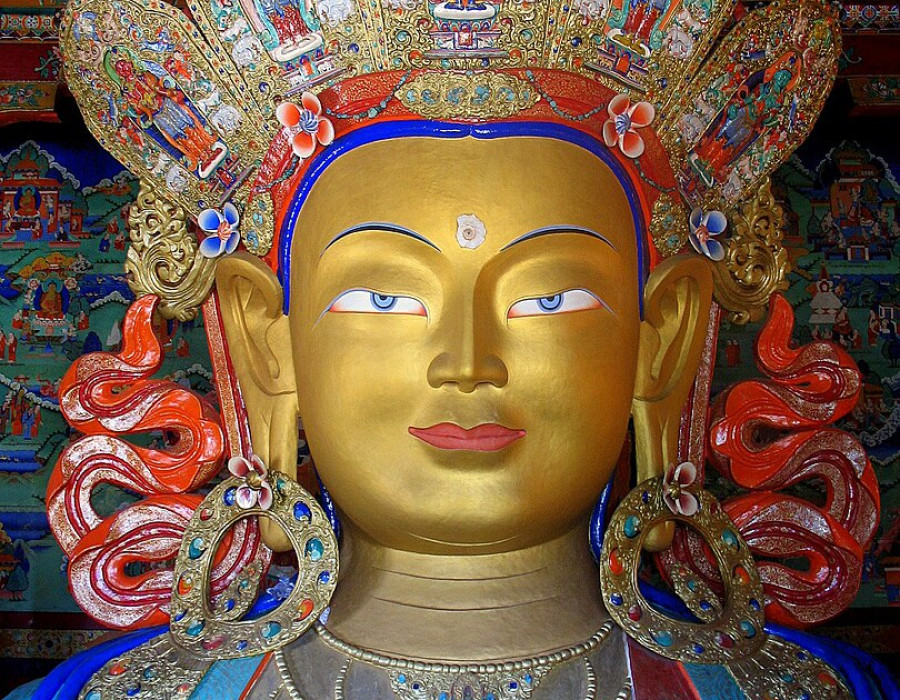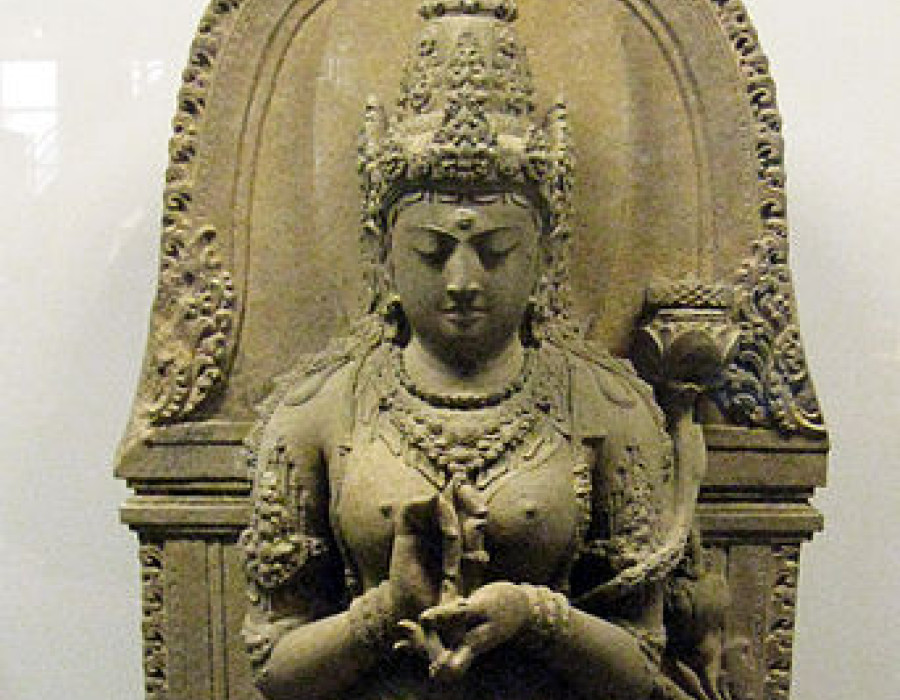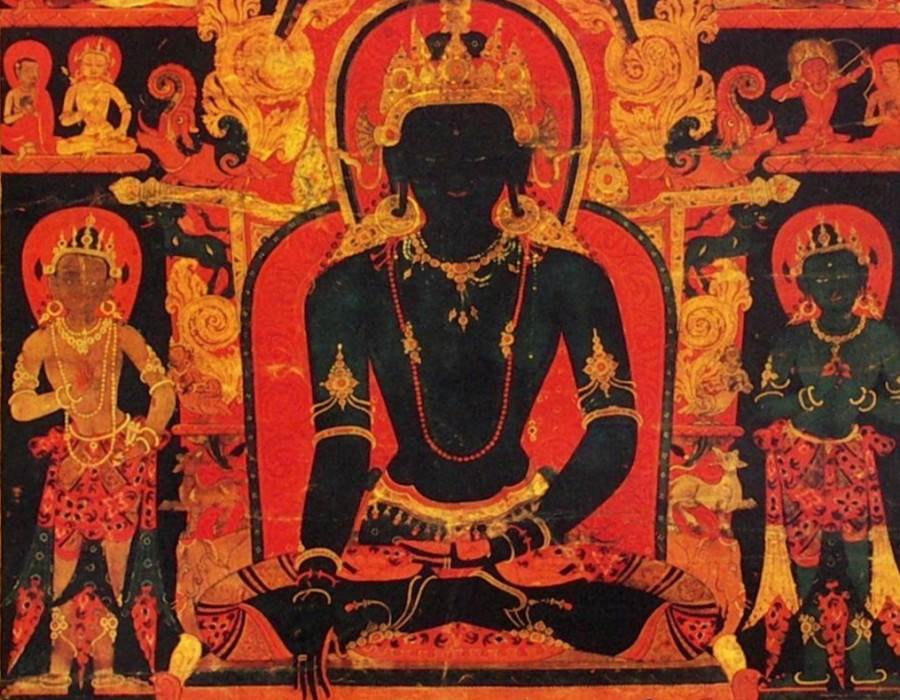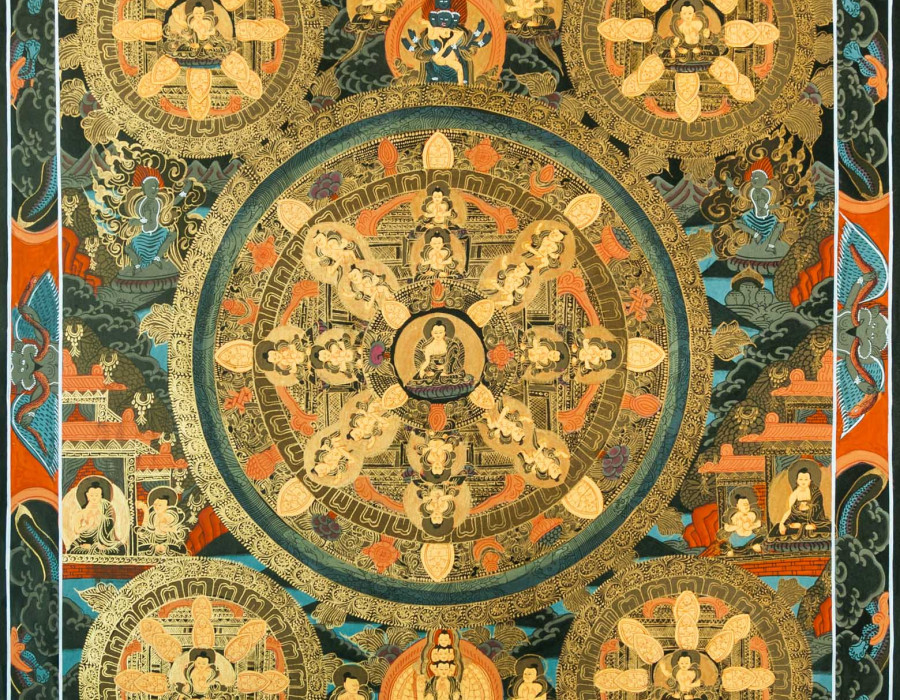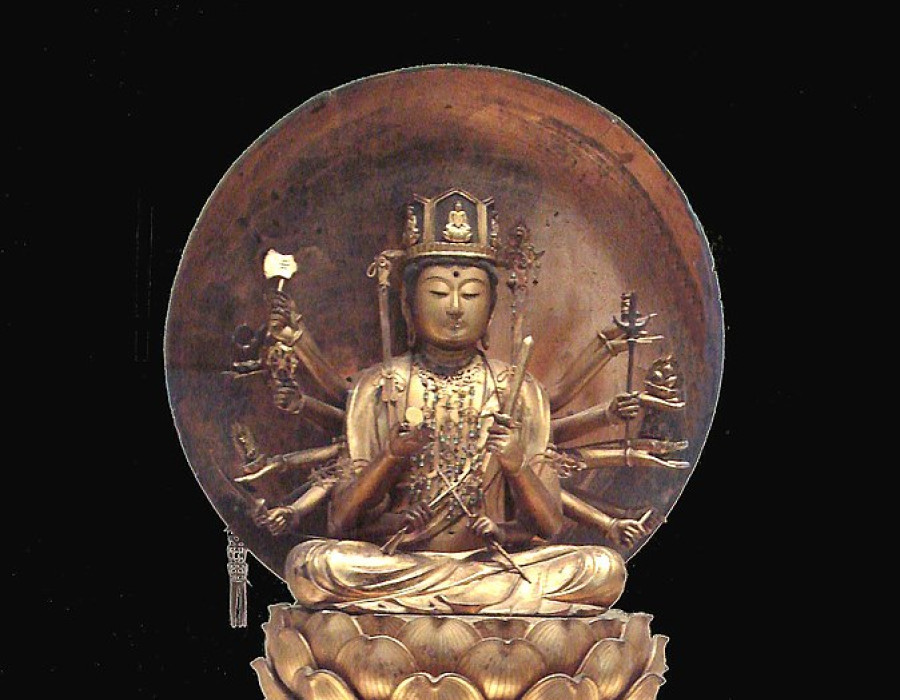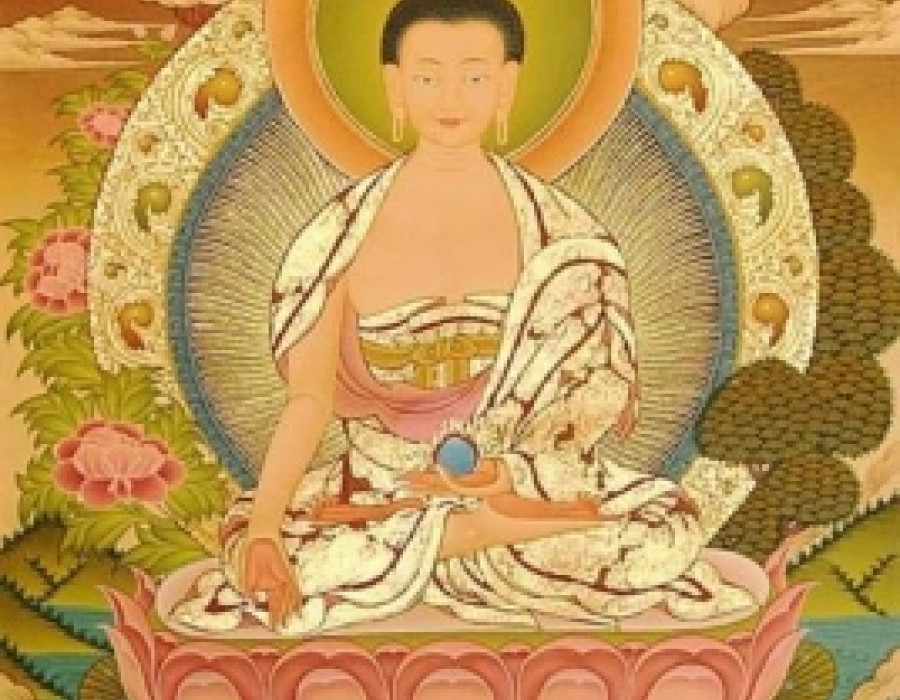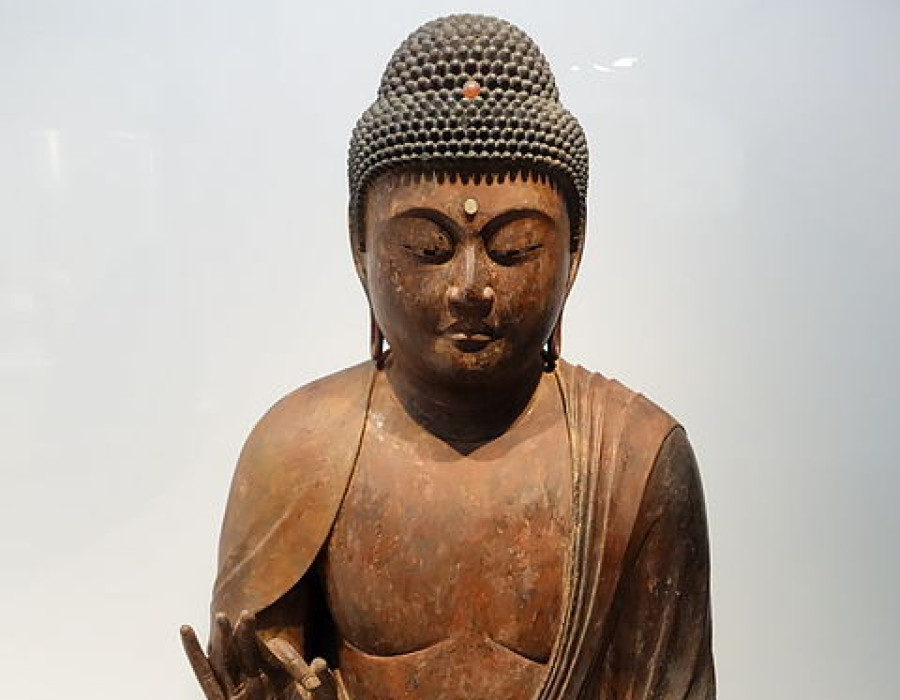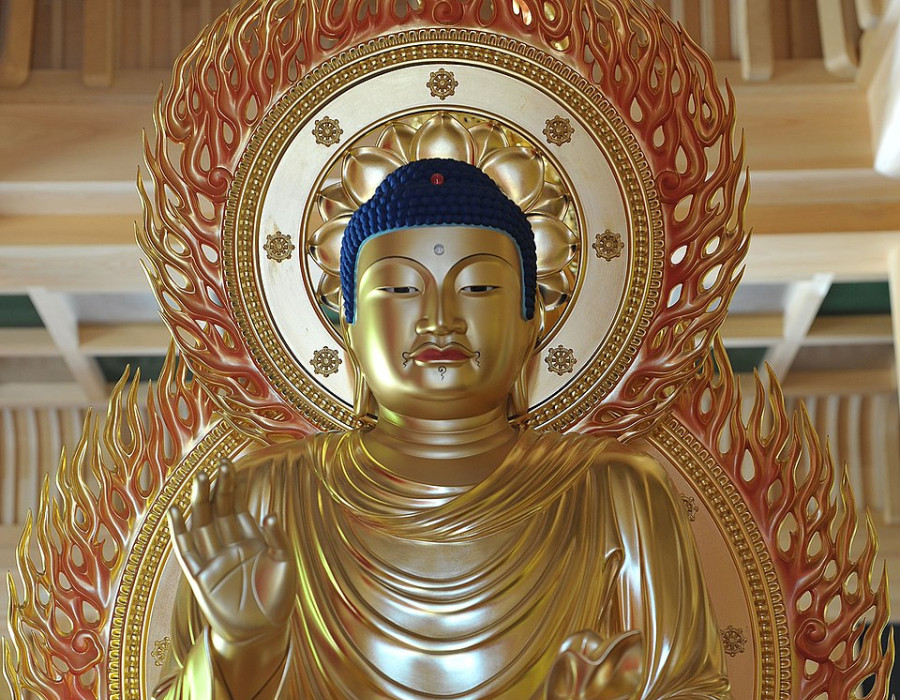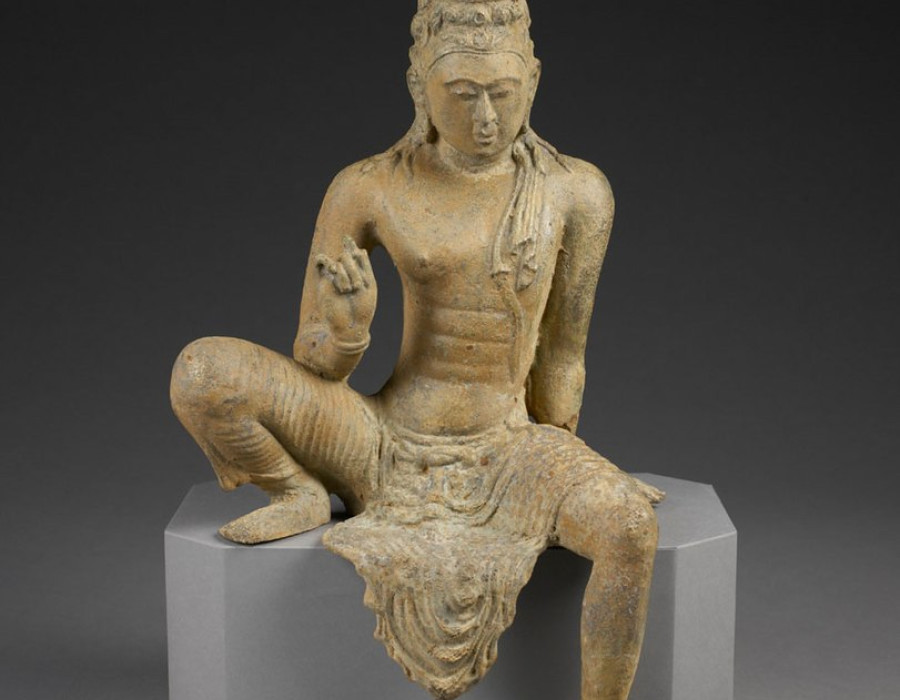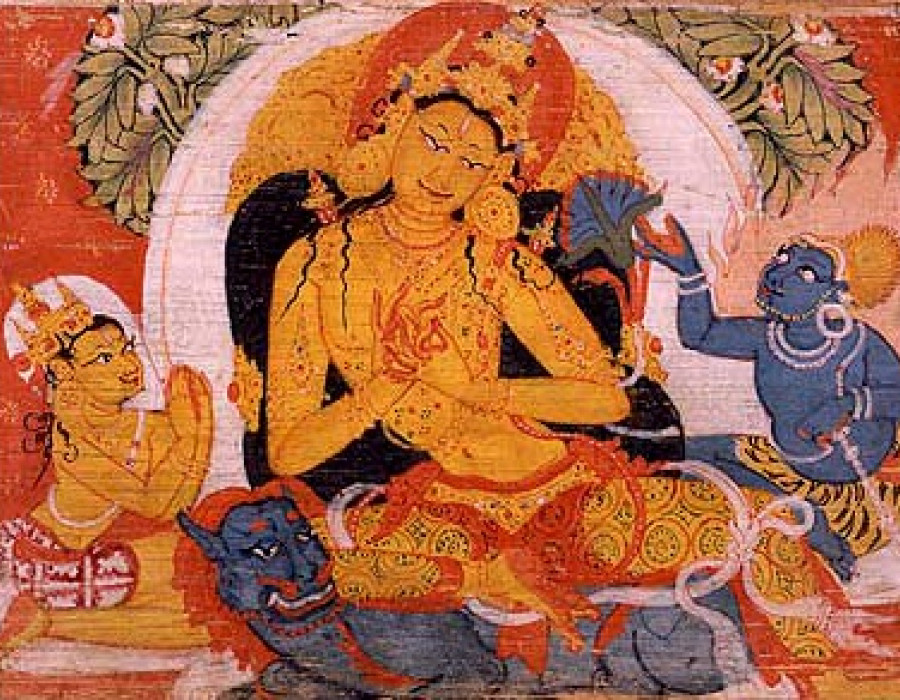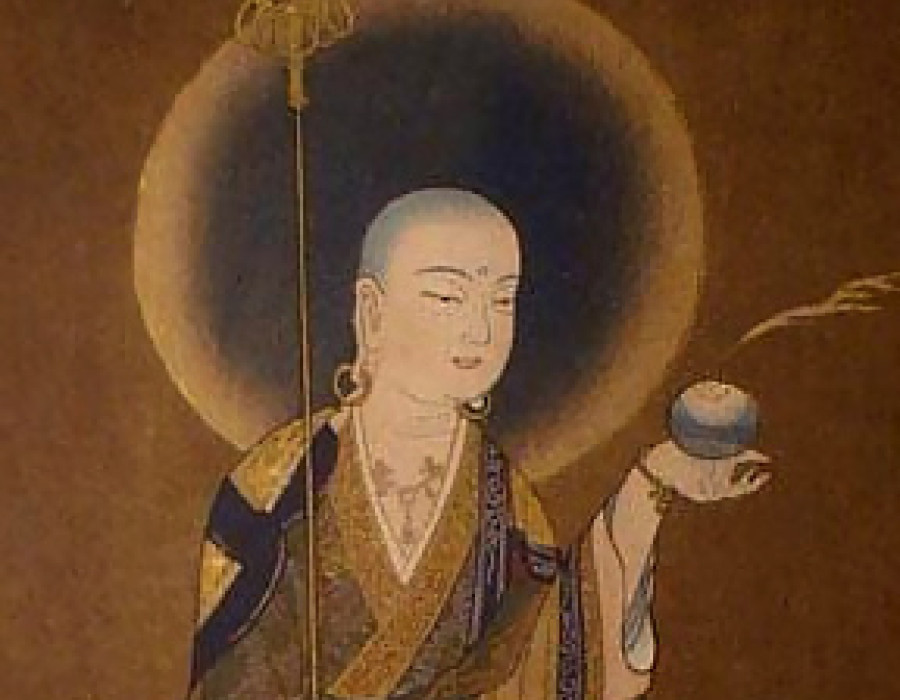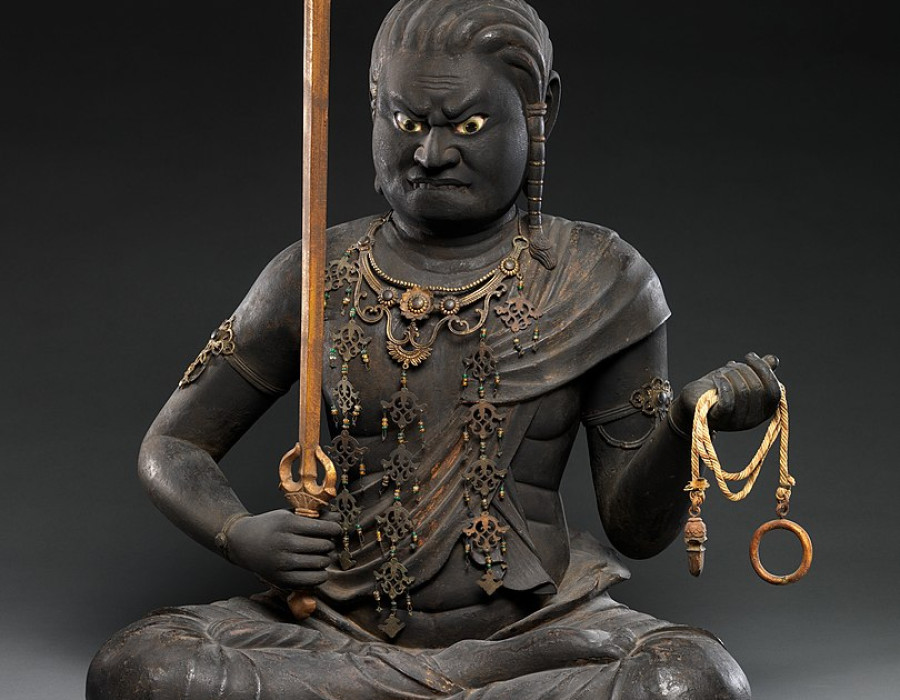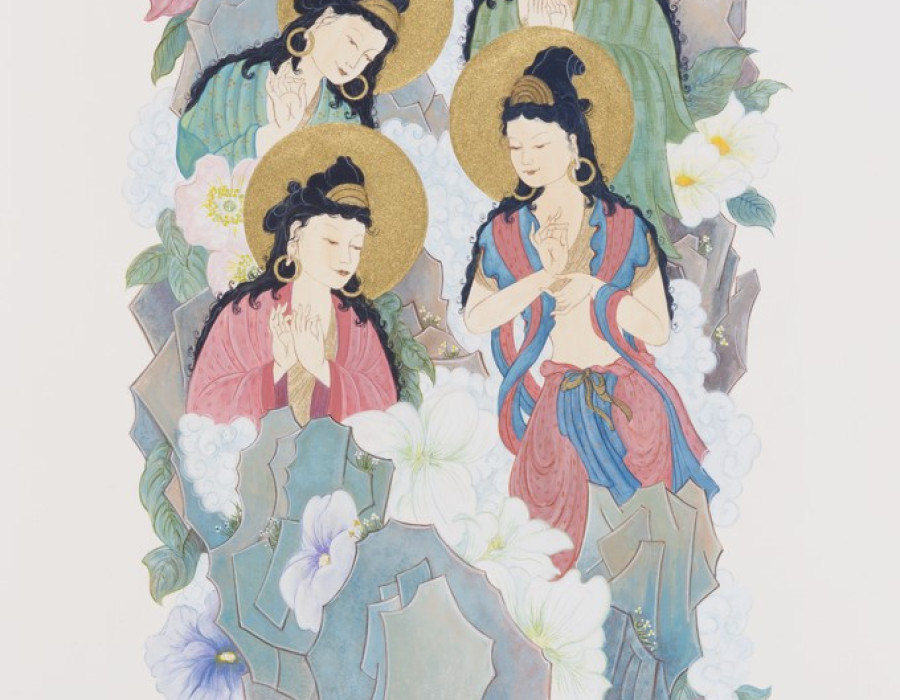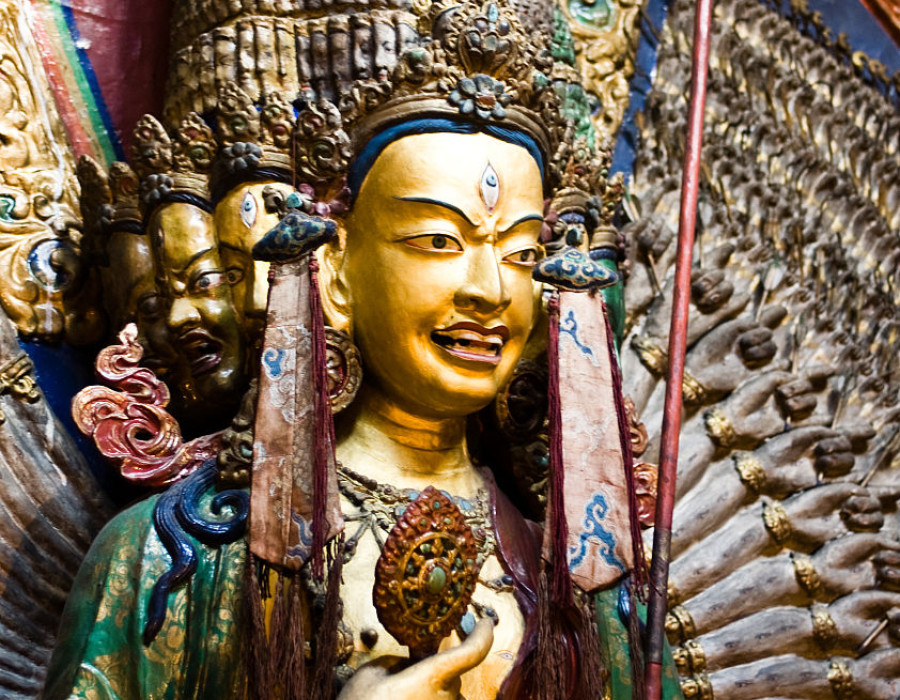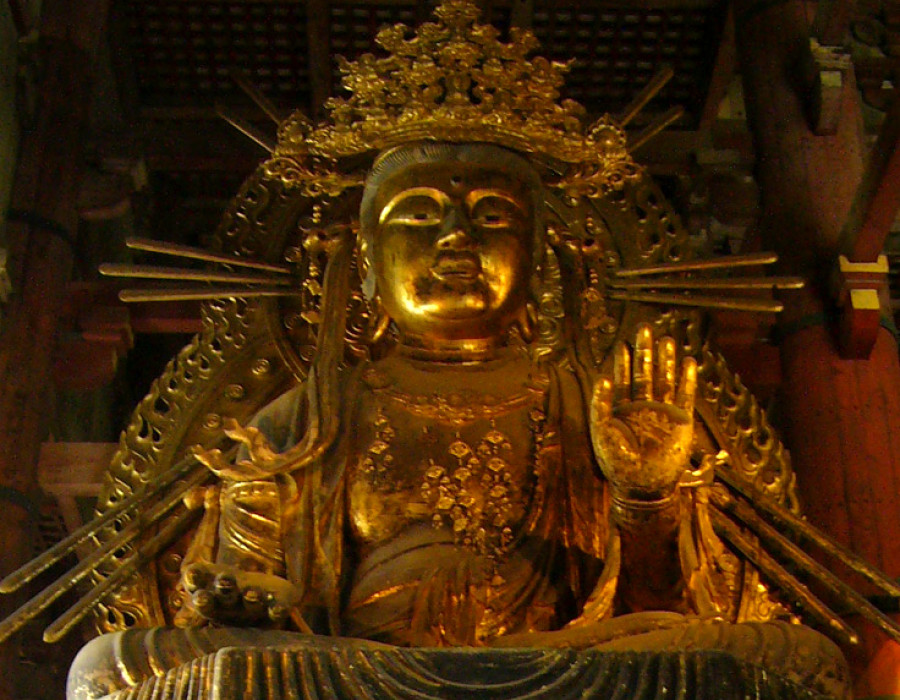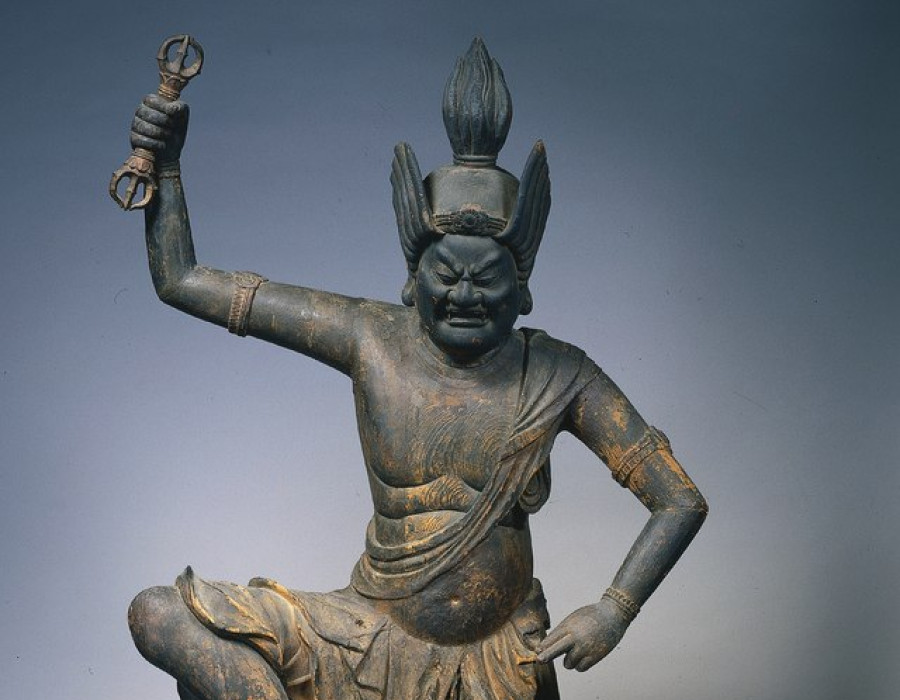
Martin Goodson
Avalokiteśvara
The Way of Devotion
One of the Great Bodhisattvas, Avalokiteśvara, is the embodiment of the Buddha's compassion. This 'embodiment' is formed of the images, mantras, scriptures and acts of body, speech and mind inspired by the Bodhisattva's compassionate heart.
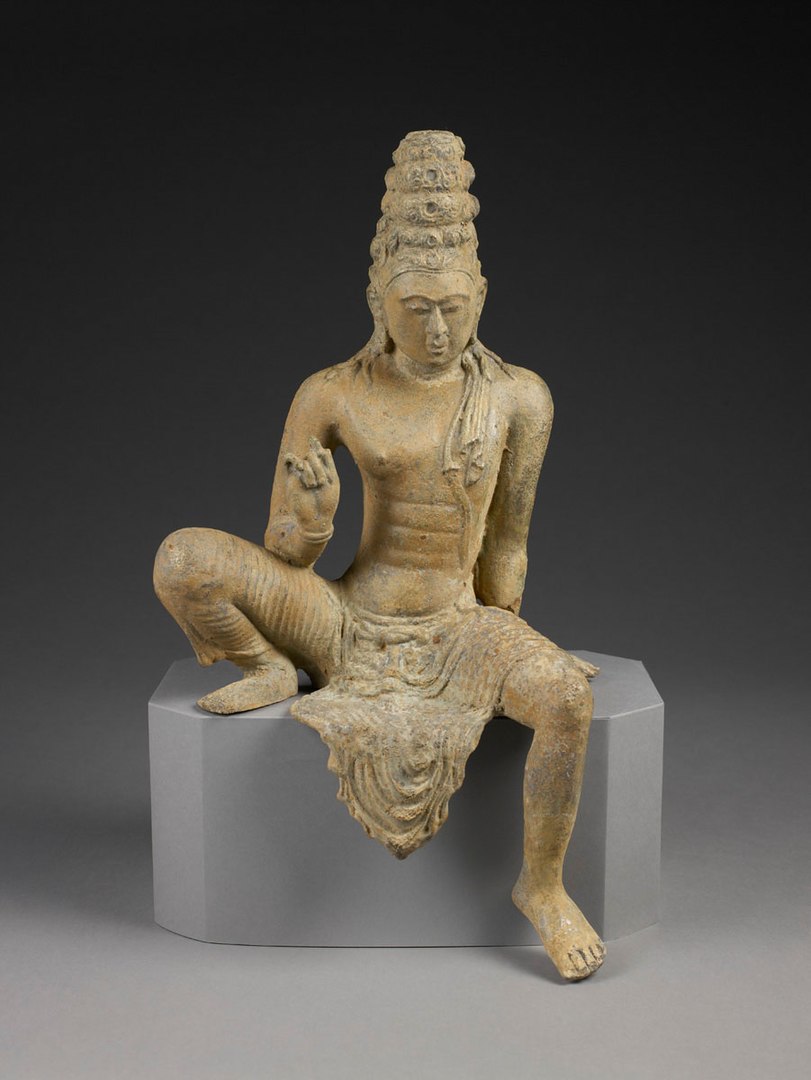 ©
©
Avalokiteśvara – “The Lord Who Looks Down” also known as Padmapāni, “Holder of the Lotus”.– is the Bodhisattva who embodies the Buddha’s compassion as it functions in the world. He, or sometimes she, takes on myriad forms throughout the many countries where this Bodhisattva is venerated.
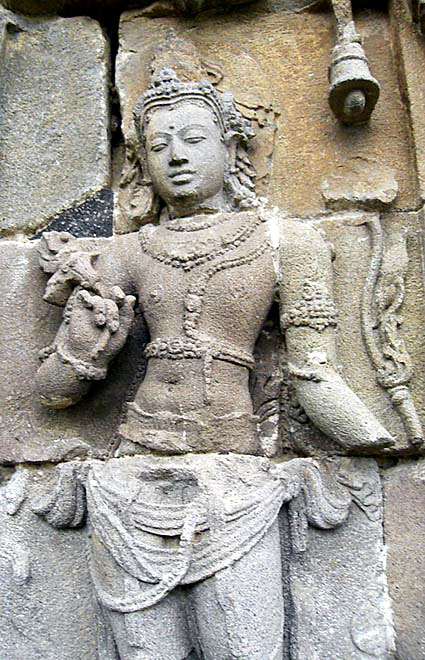
Padmapani holding a lotus. 8th-9th century Sailendran art, Plaosan temple, Java, Indonesia.
By Gunkarta, CC BY-SA 3.0, https://commons.wikimedia.org/w/index.php?curid=3005757
The six-syllable mantra associated with the Bodhisattva is the classic oṃ maṇi padme hūṃ, which is recited 108 times in a single sitting – usually with a mala, a string of 108 prayer beads – to call upon the power of Avalokiteśvara.
Avalokiteśvara is an attendant of Amitābha, one of the ‘meditation’ Buddhas, who endowed the Bodhisattva with eleven heads in order to hear the cries of all the beings in the six realms, as well as a thousand arms with which to be of assistance to them. Sometimes he is also pictured with a thousand eyes.
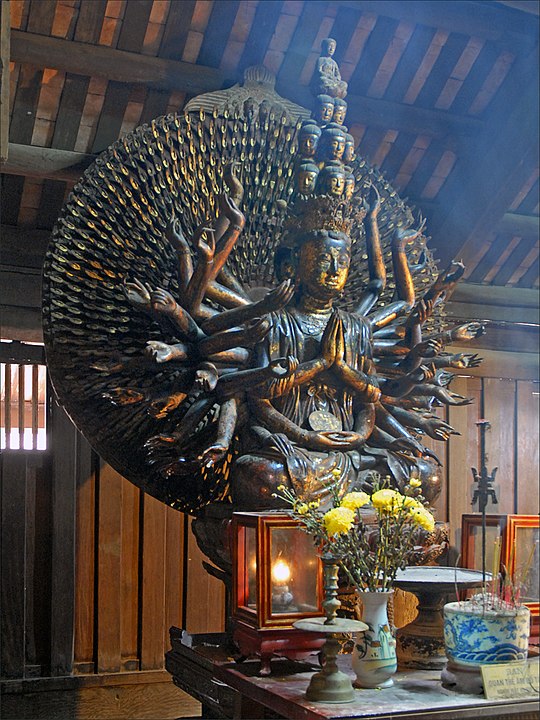
Avalokiteśvara of One Thousand Arms, lacquered and gilded wood.
By Jean-Pierre Dalbéra - originally posted to Flickr as La statue de Quan Am dans la pagode But Thap, CC BY 2.0, https://commons.wikimedia.org/w/index.php?curid=10732080
A detailed description of the Bodhisattva is given in Chapter 24 of The Lotus Sutra; sometimes this short text appears as a stand-alone scripture known as “The Avalokiteśvara Sutra”. (The Bodhisattva is also the protagonist of The Heart of Wisdom Sutra.) In the chapter, he is depicted as superhuman, and fantastical claims are made as to the power of the Bodhisattva to aid those who call upon him:
For what reason, O Lord, is the Bodhisattva Mahâsattva Avalokitesvara called Avalokitesvara? So he asked, and the Lord answered to the Bodhisattva Mahâsattva Akshayamati: All the hundred thousands of myriads of kotis of creatures, young man of good family, who in this world are suffering troubles will, if they hear the name of the Bodhisattva Mahâsattva Avalokitesvara, be released from that mass of troubles. Those who shall keep the name of this Bodhisattva Mahâsattva Avalokitesvara, young man of good family, will, if they fall into a great mass of fire, be delivered therefrom by virtue of the lustre of the Bodhisattva Mahâsattva. In case, young man of good family, creatures, carried off by the current of rivers, should implore the Bodhisattva Mahâsattva Avalokitesvara, all rivers will afford them a ford. In case, young man of good family, many hundred thousand myriads of kotis of creatures, sailing in a ship on the ocean, should see their bullion, gold, gems, pearls, lapis lazuli, conch shells, stones, corals, emeralds, pearls, and other goods lost, and the ship by a vehement, untimely gale cast on the island of Giantesses, and if in that ship a single being implores Avalokitesvara, all will be saved from that island of Giantesses. For that reason, young man of good family, the Bodhisattva Mahâsattva Avalokitesvara is named Avalokitesvara.
Saddharma-Pundarîka, or The Lotus of the True Law [The Lotus Sutra], vol. XXI
Translated from the Sanskrit by J. H.C. Kern (1884) Sacred Text Archive
What are we to make of these claims? Mahayana scriptures are full of great visionary and magical events, and the above-mentioned claims would seem to nestle into this ‘florid’ literary genre. Scholars of these scriptures tend toward the interpretation that the extraordinary visions and claims described in the text are an expression of a sense of the profundity of the Dharma, which is understood as a source of endless creativity. By comparison, the small world in which ‘I’ live is of ‘my’ own making, mundane and humdrum, lacking in creativity and locked in delusion. To read a sensational narrative is to participate in the greater vision, which itself is claimed by the sutra to be ‘Truth’ or ‘Reality’.
This takes reading the sutras to a new level: no longer a passive apprehension of events that are alleged to have occurred once, but a recreation of, and participation in, the creative power that produced the narrative itself.
To read a Mahayana sutra, then, is not just to follow the words but to enter the vision-world that the text evokes. A sutra records the directions for an imaginative journey, and the pilgrim progresses through its stages on his unique path of inner transformation It may be that far from representing a new programme for practical conduct the Mahayana path was, to a significant degree, an exercise in creative visualization; not just a fantasy but a rigorous discipline of meditative visualization resulting in profound personal transformation.
Nagapriya, Visions of Mahayana Buddhism (Windhorse, 2009)
Thus we are not to read these excerpts from the scriptures in a literal sense, but in a poetic one. It is a form of literature that, like a good poem, evokes living experience, from the heart of the poet, in the heart of another, who recites it.
The beings that populate these sutras are also evoked by this practice. They exist through mantras, symbols, names and prayers. It is as if they have assumed these forms as conduits for the power they represent; hence the extraordinary claims in the Mahayana sutras for what they can do merely by having these recited or created.
At root, this view challenges the agency of ‘I’. As we know, the Buddha declared that ‘I’ am a delusion. How can it be, therefore, that ‘I’ have any agency at all? The appearance of agency is not denied by the Buddha, but neither does it represent the reality of the situation. The vision that is given is one of an ecology of Buddhas and bodhisattvas that do not inhabit some kind of ‘supernatural’ world but are simply an invisible component of the one world in which we all live.


